It is obvious, Athanasius Kircher declared in his voluminous Musurgia universalis (Rome, 1650), that nature is ordered harmonically. To describe this harmony he uses the term “natural music,” by which he includes the harmony of the heavens, the elements, and the human body. Only “artificial music” is actually sounding music. By viewing harmony as an overarching structural principle in the world, Kircher positioned himself in a longer tradition that was devoted to the study of harmony and proportions in all its forms, sounding or not. Encompassing a wide variety of ideas, the concept of harmony was used for things that fit together, create concord or union, and unite different elements. This section of the exhibit turns to images that in one way or another tried to depict the concept of harmony, in a variety of fields and objects, from human bodies and buildings to the universe itself. For example, in his investigation of the sounds of animals, Kircher argued that these animal noises could be perfectly expressed with standard musical notation, turning notation into a central method for demonstrating harmony in the natural world.
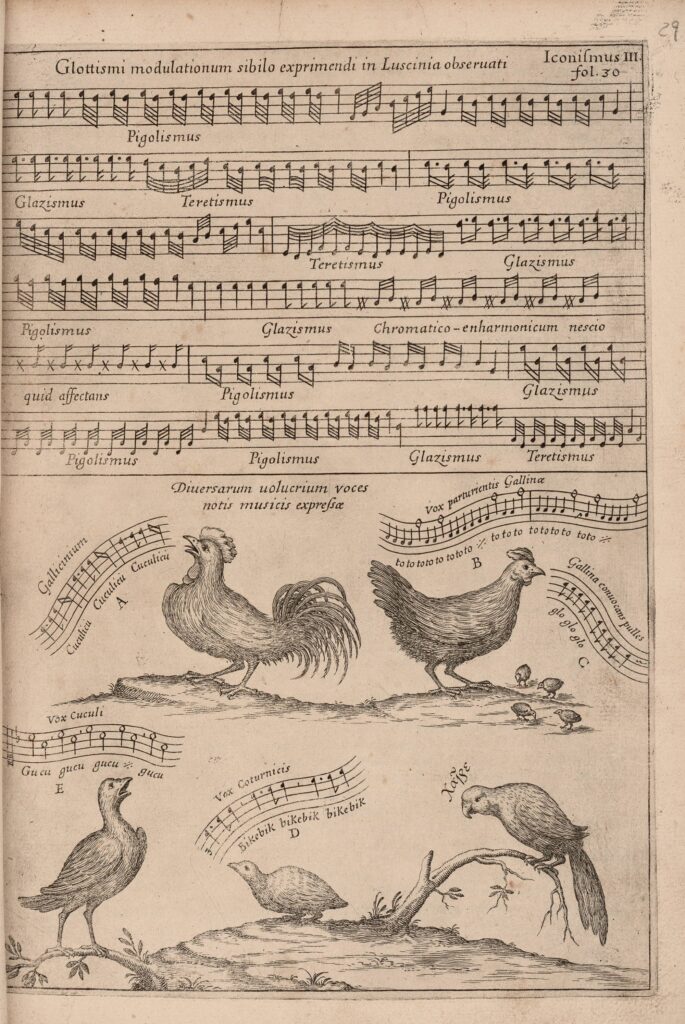
The oldest object of our exhibit is the Nuremberg Chronicle (Das Buch der Chronicken, Nuremberg, 1493) written by the physician, humanist, and bibliophile Hartmann Schedel. The book offers a sweeping Christian world history that begins with the Creation and ends with the Last Judgement. The book also includes histories, of so-called chronicles, in which information and views of important cities at the time were included. The text is richly illustrated with over 1,800 woodcuts printed from approximately 645 woodblocks made by Michael Wolgemut and Wilhelm Plydenwurff and is perhaps best known for its city views. In the image depicted, we see a view of Nuremberg, after which the book is named because of its place of printing
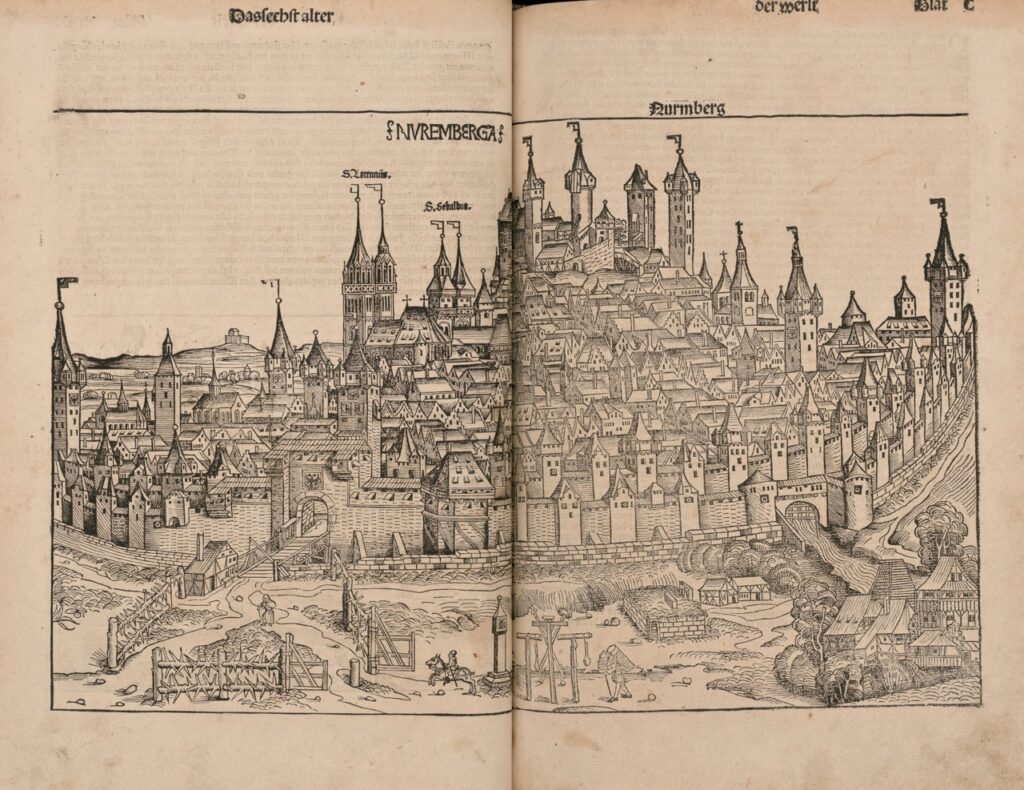
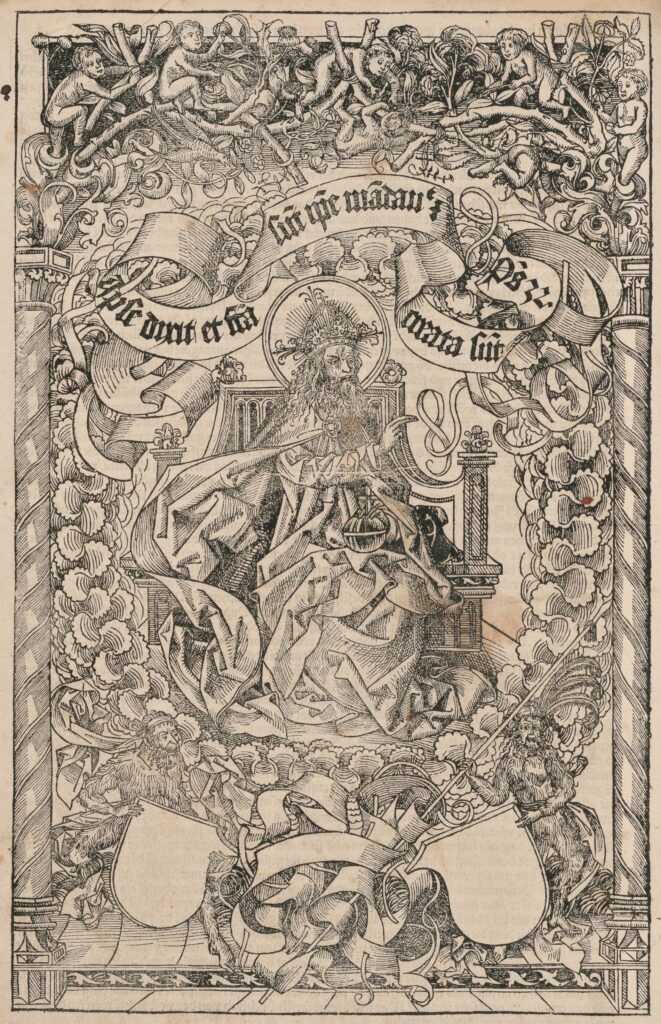
The hand is excerpted from the first woodcut of the book, which depicts God the Father in his heavenly thrown in his first act of the Creation. The subsequent inclusion of the gesture in the rest of the creation story serves as a visual synecdoche and allows for visual continuity while placing emphasis on the harmonic nature of God’s world.
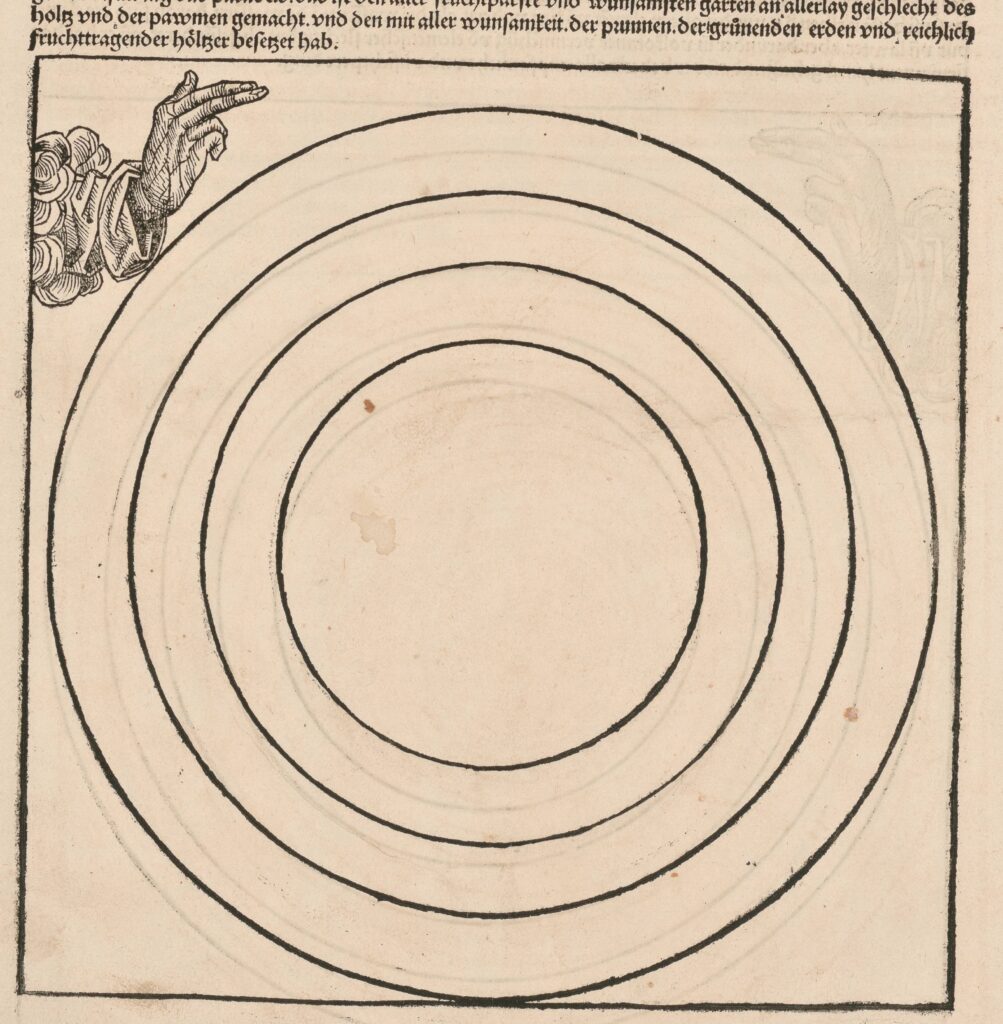
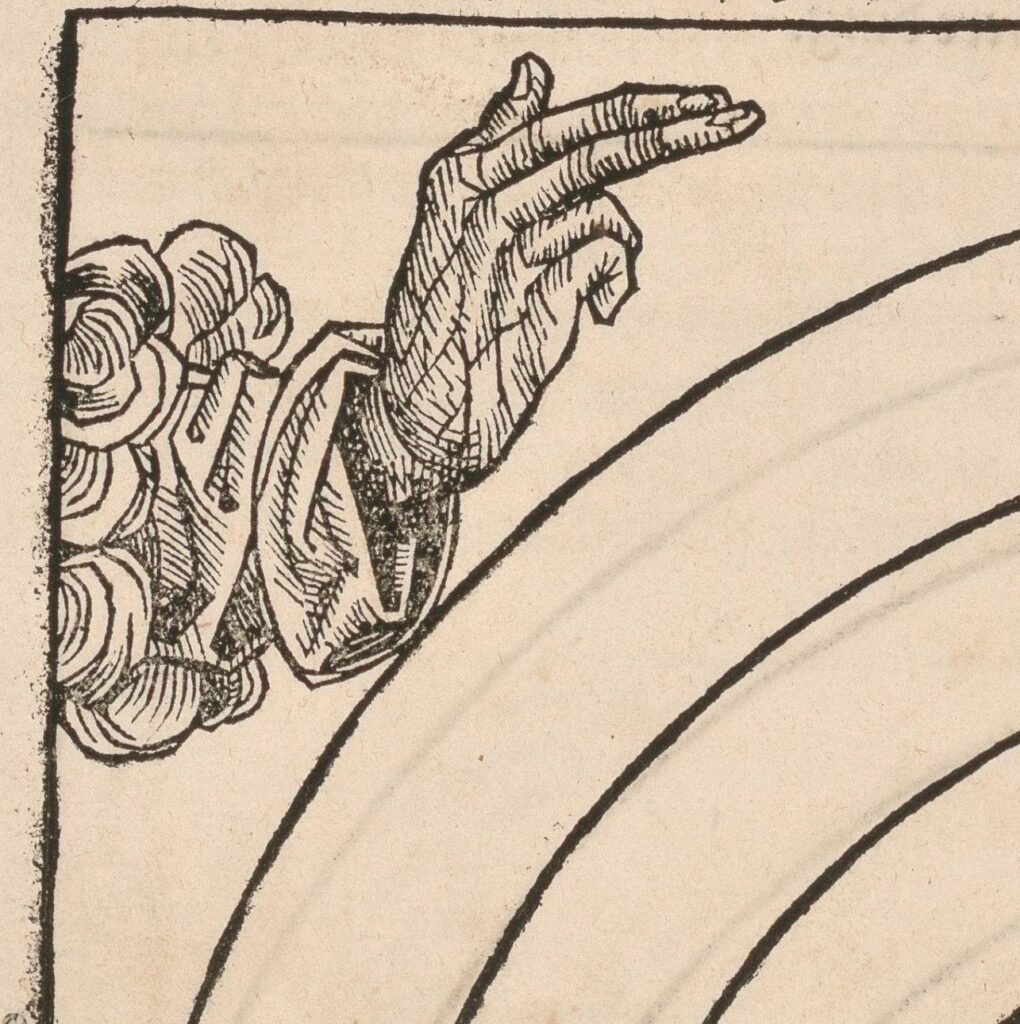
The range of images in the book is expansive. Here, among the series of woodcuts illustrating the creation of the world, is one used to illustrate the third day of the Creation where God separated land and sea. Four concentric rings are used to depict the building of the world as a harmonious act, with the circles embodying the perfection of God’s Creation. The role of the divine is indicated by a disembodied hand.
A diagrammatic representations of actually “sounding” harmony can be found in in the realm of music theory publications. This table represents the so-called “perfect system” of ancient Greek musical theory, taken from the 1511 edition of Vitruvius’s De Architectura (Venice, 1511). Vitruvius used music theoretical concepts of the Greek author Aristoxenos to describe architectural principles. Music belonged both to the theory and practice of architecture, Vitruvius argued, a dictum many of his later commentators adopted.
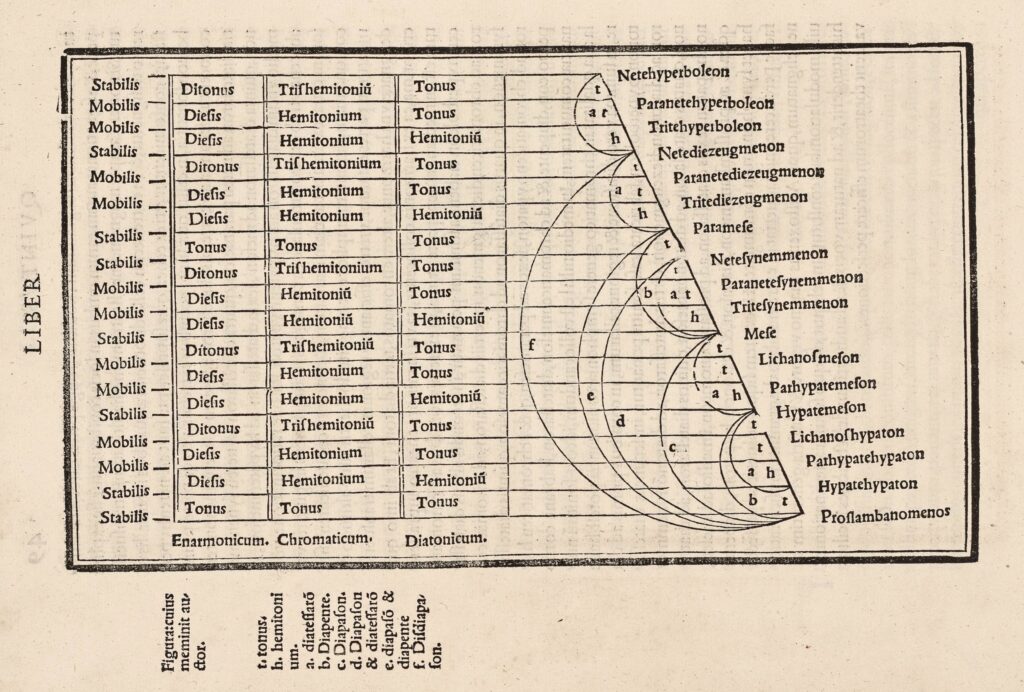
In the image the notes and their relationships are displayed in different columns, distinguishing between the three tonal genera or classes of intonation: diatonic, chromatic, and enharmonic. Different musical pitches are labeled on the left by their names, such as “proslambanomenos” and “paramese”. These tones together construct tetrachords (a group of tones spanning the distance of a fourth) among themselves. Ultimately, the image shows all the tones, their distances and relations, encapsulating the fundamental tenets of Greek music theory in a single image.
Later translators of the treatise similarly tried to visualize Vitruvius’s musical discussions, relying on contemporary music theory, such as the diagram on the right from the 1521 Italian edition by Cesare Cesariano. The two diagrams show two different solutions to the problem of capturing music theory into one synoptic image.
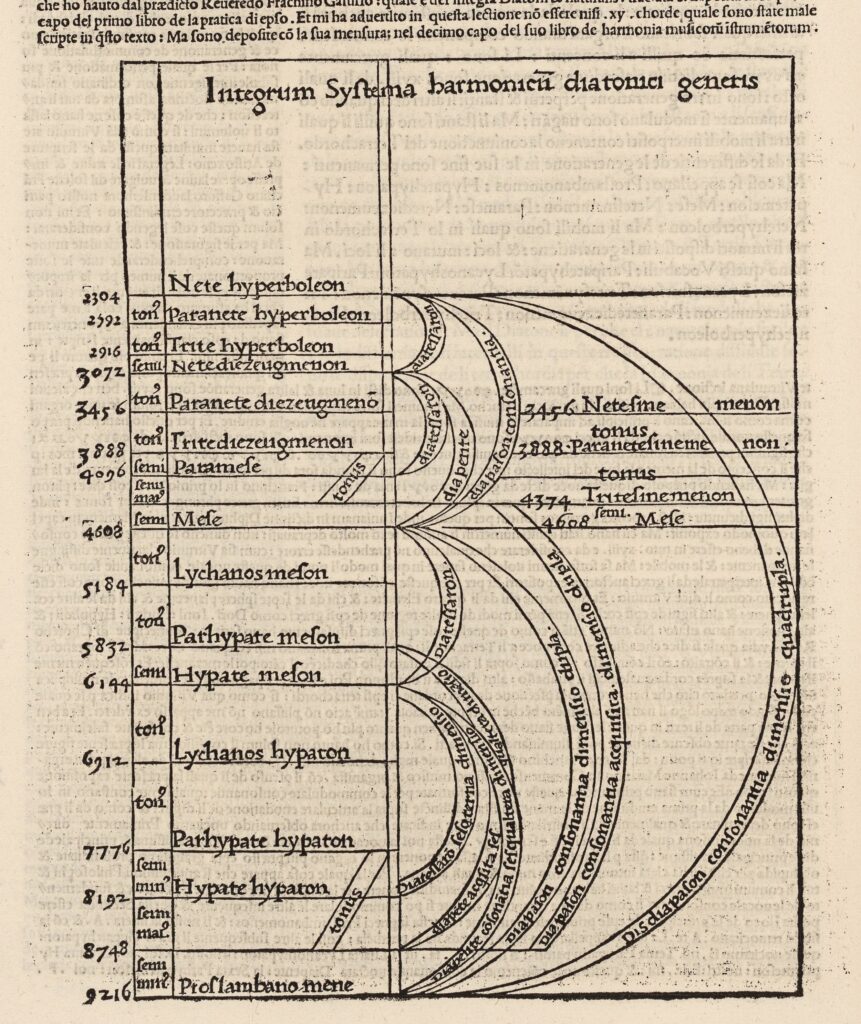
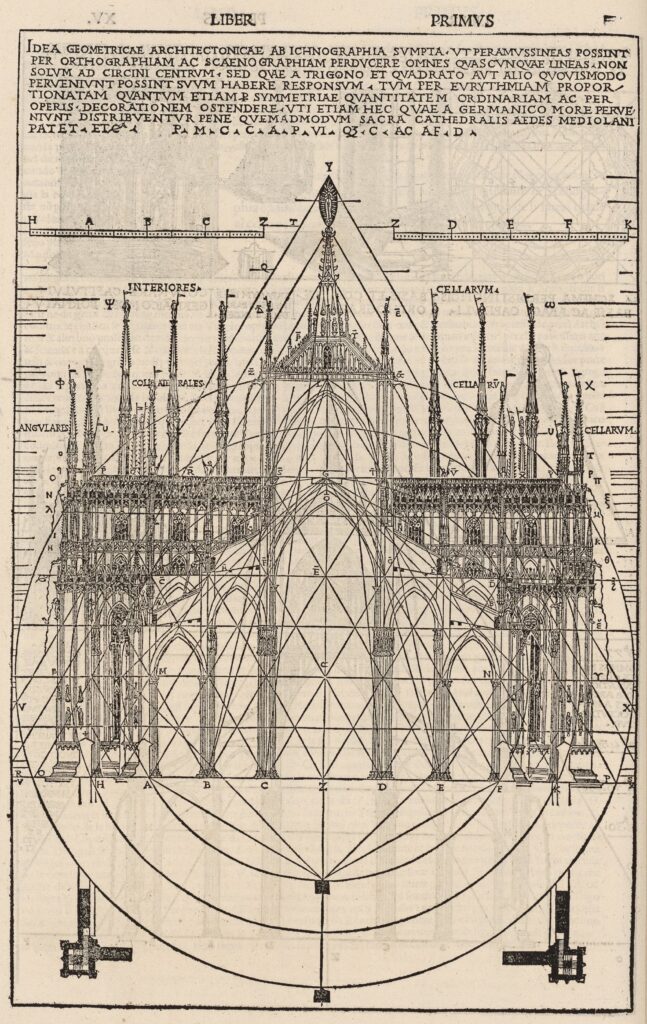
The same emphasis on harmony is also present in other images from the 1521 Italian edition of Vitruvius. This elaborate woodcut of the Milan Cathedral is used to illustrate the centrality of order, decorum, and symmetry in the creation of harmonious buildings.
An elaborate geometrical scheme is superimposed on the elevation plan to demonstrate the complex geometries that afforded the cathedral its beauty. As the first edition of Vitruvius printed in Italian, it is significant that Cesariano chose to illustrate these principles with a local, vernacular model, rather than using classical forms. Rather, in the Milanese context it is the complexity of the Gothic that offered a model for harmonic perfection in architecture.
Around the same time, other authors searched for the harmonic principles of the human body. According to his own account, Albrecht Dürer investigated between two and three hundred of his contemporaries to uncover the proportions of the human body, conducting empirical studies alongside reading classical sources like Vitruvius.
Published originally in German in 1528, Dürer’s book Della simmetria (Venice, 1591) contains different images of male, female, and infant bodies, where all parts of the bodies are expressed in fractions. In this image the proportions of a male figure are displayed, making clear for the viewer how the separate parts of the body relate.
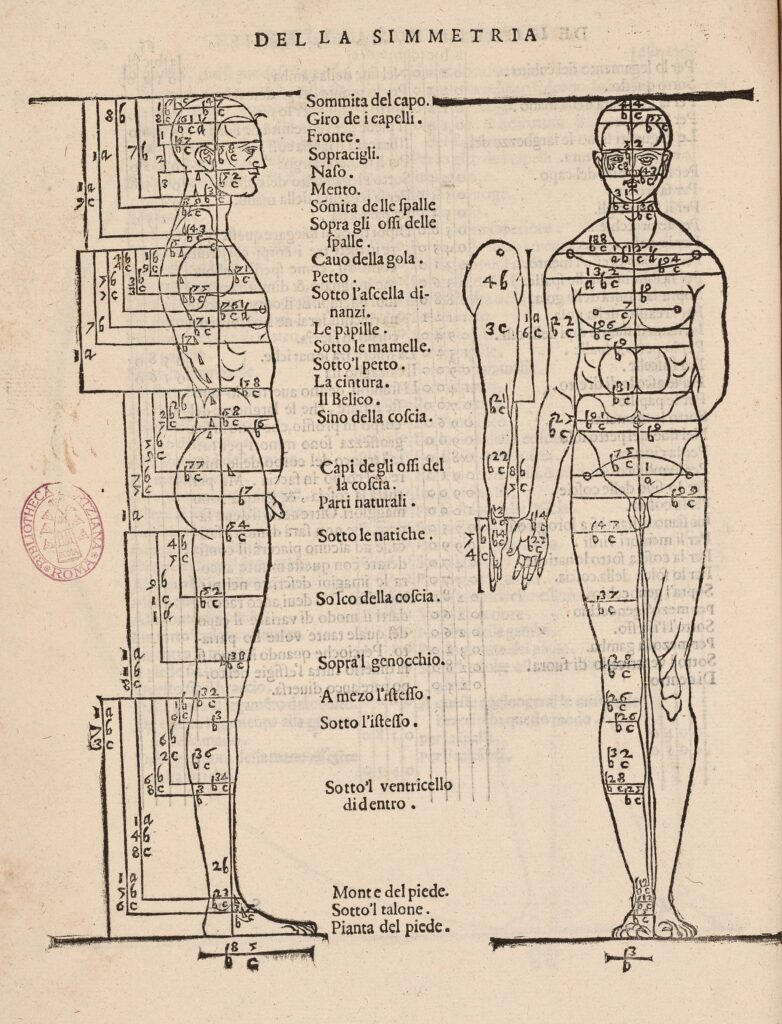
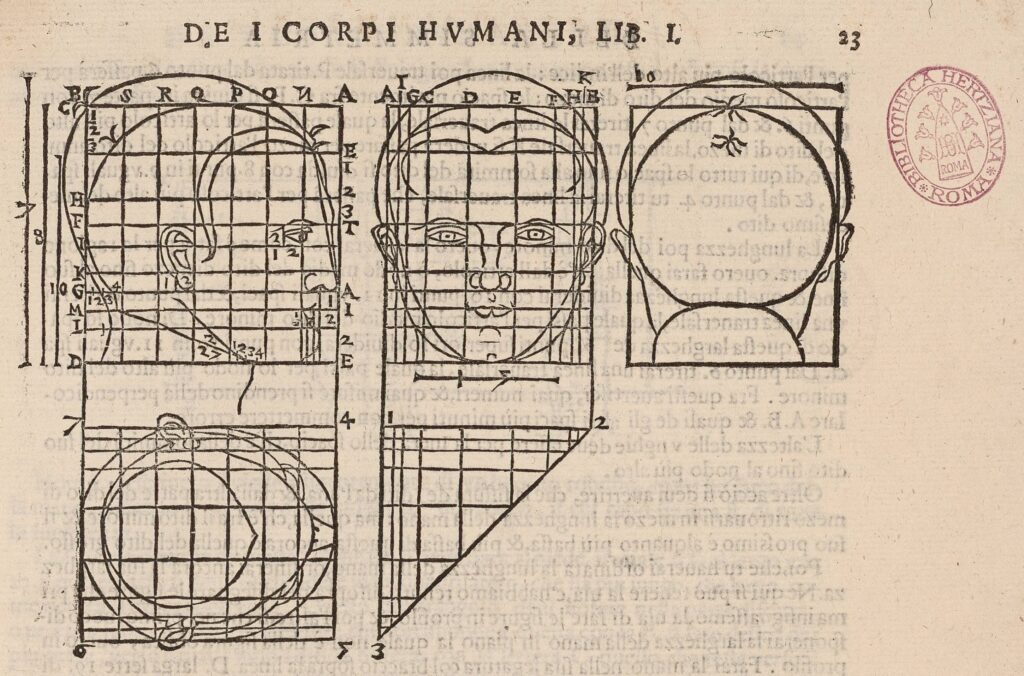
Dividing heads, hands, and arms of women, children, and babies into smaller parts, Dürer went beyond the famous image of the Vitruvian man. He introduces a grid system to make clear that the human body has an internal logic and harmony present, removing individual difference.
These different ways of depicting harmony collide in Kircher’s Musurgia universalis (Rome, 1650), in which the Jesuit did not only depict musical proportions and the sounds of birds, but also the harmonies of buildings, human bodies, and the creation of the world itself. Kircher adopted here methods of visualization from different disciplinary traditions.
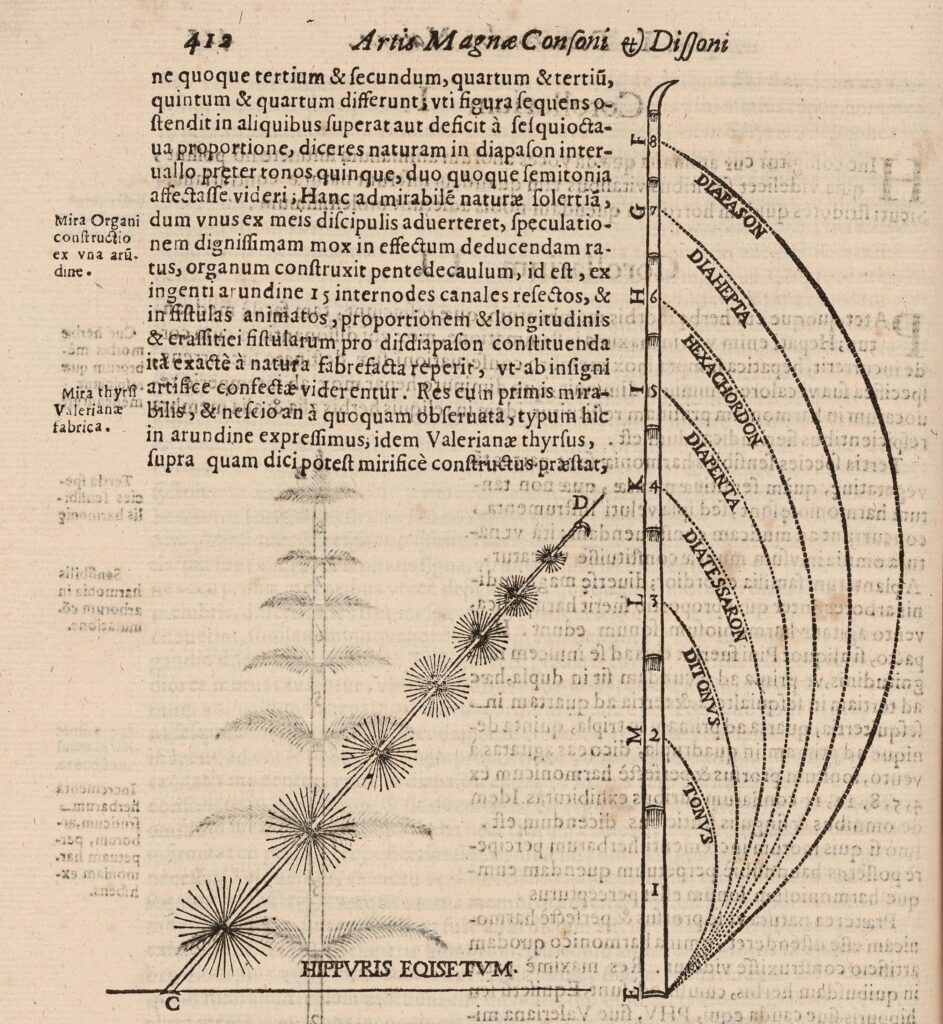
Kircher was also interested in the harmonic proportions of different plants. For example he argued that the narrow reed EF depicted vertically on the right is structured according to the same proportions as the pipe of an organ.
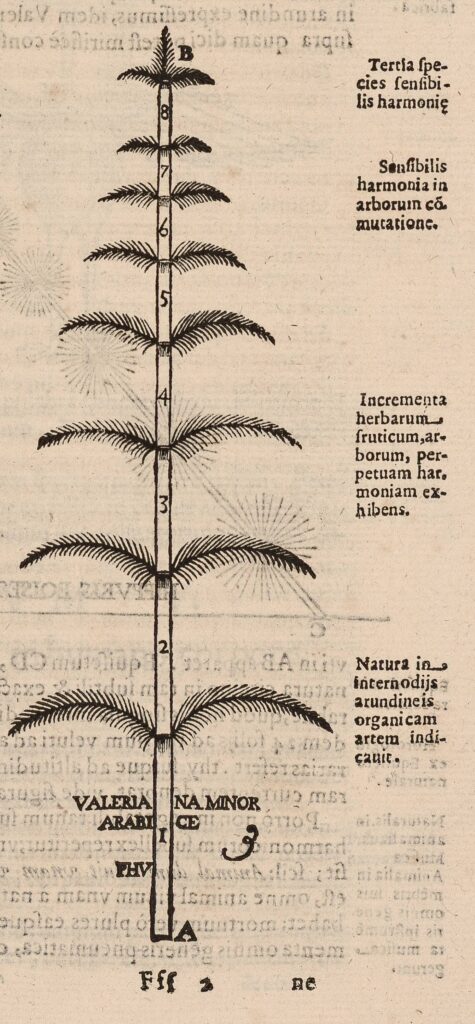
The plant on the left, which he designates as mare’s tail (Equisetem or Hippurius) follows the proportions of the monochord, the string instrument that was traditionally used to demonstrate the proportions of music. Kircher had to acknowledge that the proportions of these plants were not perfectly congruous with the mathematical divisions found in music, but rather than questioning his empirical results he suggested that nature could also follow different proportions.
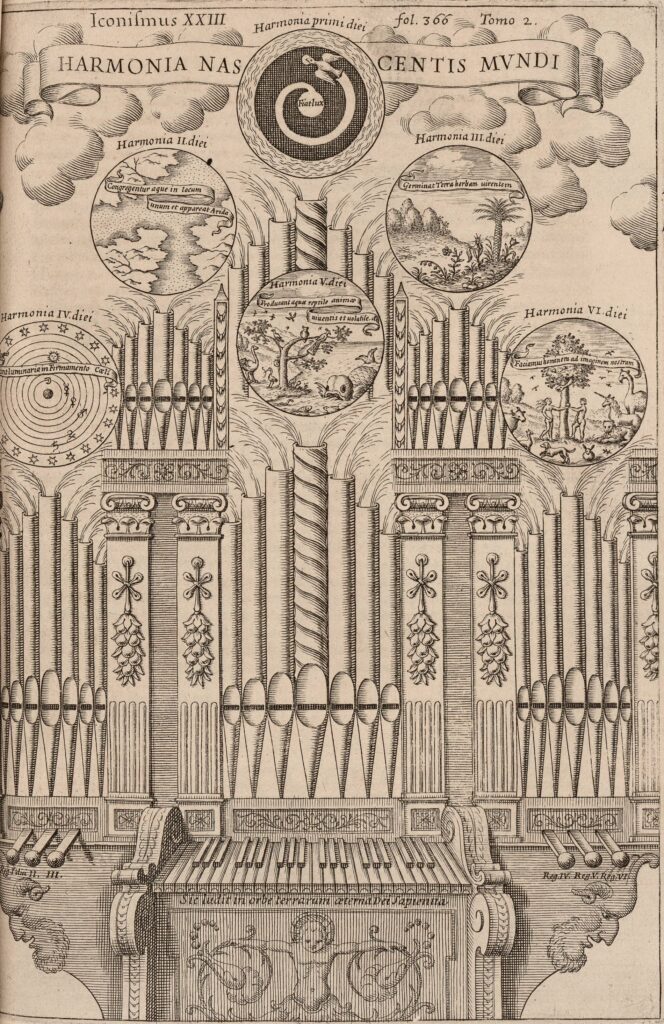
In his efforts to bring the harmony of entire world to the printed page, Kircher visualizes the Creation as a musical process. The first part of the book of Genesis up till Adam and Eve in paradise is depicted as the sounding result of a large organ with six registers.
Each of the six days of the Creation is depicted as an organ register. Even though we do not see the player or any movement of the keyboard, the engraved lines visualizing the wind coming out of the pipes suggest a forceful sound.
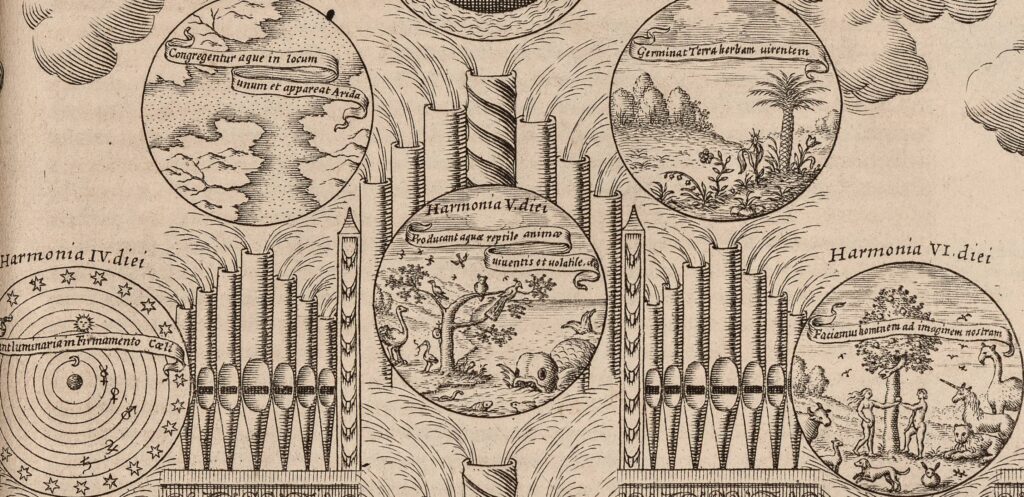
The player of this instrument is God himself, as the text underneath the keyboard makes clear (“Sic ludit in orbe terrarum aeterna Dei sapientia”). Kircher gives no indication how this harmony would sound, but the curious division of the keys of the keyboard suggests that the tones might be different than what we expect. Possibly Kircher looked for perfect symmetry in this divine keyboard, or envisioned a numerological meaning of four white keys and three black keys grouped together. Whatever the reason, this cosmic organ invites viewers to consider the Creation as a creative and musical process, connecting actual music making with Biblical exegesis.
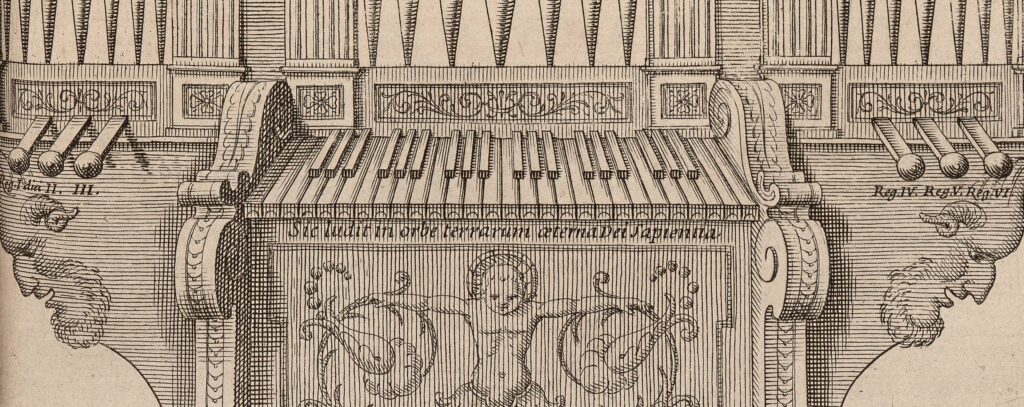
Sources:
- Dürer, Albrecht. Della simmetria de I corpi humani, Libri Quattro. Venice: Nicolini, 1591. Gh-DUE 6551-1910 raro VII [Kubikat; Digitized Version]
- Kircher, Athanasius. Musurgia Universalis Sive Ars Magna Consoni Et Dissoni. Rome: Corbeletti/Grignani, 1650). Zs-KIR 1051-2500 raro [Kubikat; Digitized Version]
- Schedel, Hartmann. Das buch der Cronicken vnd gedechtnus wirdigern geschichte[n] vo[n] anbegyn[n] d[er] werlt bis auf dise vnßere zeit … .Nuremberg: Koberger, 1493. Rr 5400-930 raro [Kubikat; Digitized Version]
- Vitruvius. Vitruvius per Iocundum solito castigatior factus: cum figuris et tabula, ut iam legi et intelligi possit ; cum figuris et tabula, ut iam legi et intelligi possit. Venice: Tridino, 1511. Gf 200-1110 raro VI [Kubikat; Digitized Version]
- Vitruvius. Di Lucio Vitruvio Pollione De Architectura libri dece traducti de latino in vulgare affigurati. Como: Da Ponte, 1521. Gf 200-1210 gr raro [Kubikat; Digitized Version]
Further reading:
- Giles, Roseen H. “The Inaudible Music of the Renaissance: From Marsilio Ficino to Robert Fludd.” Renaissance and Reformation / Renaissance et Réforme 39, no. 2 (2016): 129- 166.
- Prins, Jacomien and Maude Verhaelen, eds. Sing Aloud Harmonious Spheres: Renaissance Conceptions of Cosmic Harmony. New York: Routledge, 2019.
- Rowland, Ingrid. “Vitruvius in Print and in Vernacular Translation: Fra Giocondo, Bramante, Raphael and Cesare Cesariano.” In Paper Palaces: The Rise of the Renaissance Architectural Treatise, edited by Peter Hicks and Vaughan Hart, 105–21. New Haven: Yale University Press, 1998.
- Rommevaux, Sabine, Philippe Vendrix and Zara Vasco, eds. Proportions: science, musique, peinture & architecture. Turnhout: Brepols, 2011.
- Wald-Fuhrmann, Melanie. Welterkenntnis aus der Musik: Athanasius Kirchers “Musurgia universalis” und die Universalwissenschaft im 17. Jahrhundert. Kassel: Bärenreiter, 2006.
- Walden, Daniel. “Frozen Music: Music and Architecture in Vitruvius’ De Architectura.” Greek and Roman Musical Studies 2 (2014): 124-145.